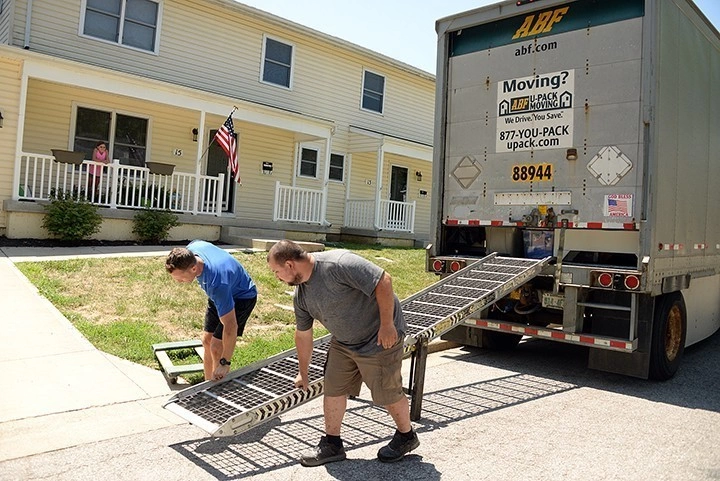What to Know About VA Intent to File and Fully Developed Claim Options

When filing a claim for VA disability pay, veterans must spend time gathering evidence from military and civilian care providers.
This can take time, and those who wait to file until they have gathered all their information could miss out on back pay or other options that may be available.
Why? For some purposes, your benefits are calculated from entering the VA system, not when your claim was approved. You could qualify for back pay for benefits from when you entered the VA system to when your claim was approved.
That’s why the VA has a system in place that allows a veteran to “get in line,” so to speak, for back pay even if the claim they’re submitting isn’t ready yet. This is known as an “intent to file” a VA claim, and it’s what many veterans do at the start of their VA process.
How Does a VA Intent To File Work?
You can enter an intent to file a VA claim without submitting fully completed applications or all documentation. According to VA.gov, more veterans in 2023 submitted an intent to file (ITF) than any other year since the option became available.
“These ITFs are disability compensation claims that Veterans started but didn’t finish, and they’re an important tool because they help Veterans preserve their earliest possible effective date for their benefits claim, which makes them potentially eligible for backdated benefits.”
Related: Disabled Veteran Benefits Guide
VA Time Limit
VA.gov says, “If you submitted an ITF last year, you must act fast. You only have 365 days from submitting your ITF to complete it.” If you miss this deadline, you are not automatically denied your claim, but be advised that your claim may move forward without the possibility of retroactive VA disability pay.
VA.gov also reminds applicants, “If we grant your benefits under the PACT Act and you submitted your intent to file on or before Aug. 14, 2023, you may be eligible for retroactive benefits dating back to Aug. 10, 2022—the date PACT Act was signed into law” so there is good reason to move quickly with an intent to file for many.
Check the Status of an Intent To File
If you filed a PACT Act claim and need to check the status of it, sign into your va.gov account with your existing Login.gov, ID.me, DS Logon or My HealtheVet account or create a free account at Login.gov or ID.me.
It’s Not Too Late to Submit an Intent to File for VA Benefits
VA.gov urges veterans to file an ITF using a VA.gov account and submit it online or submit an ITF to a VA regional office nearby. You can get help filing a claim for disability compensation by using a veteran service organization.
Using the VA Fully Developed Claim Program
If you are eligible for disability benefits through the VA, you can choose to speed up the process by submitting an intent to file for a Fully Developed Claim to receive compensation, pension and survivor benefits as quickly as the process allows.
Fully Developed Claims can be submitted for presumptive conditions as well. Applying for benefits using a Fully Developed Claim is risk-free. Claims that do not qualify as Fully Developed Claims can still be submitted as normal claims. You can apply with a Fully Developed Claim online, in person, by fax or with the help of a VSO.
Related: Disabled Veteran Benefits Guide
Who Can Use It?
The Fully Developed Claim Program expedites applications that include all necessary evidence and documentation to allow eligible applicants to receive benefits faster, usually between three to four months.
To apply with a Fully Developed Claim, you must first be eligible for benefits through the VA, meaning you must be experiencing a physical or mental condition at the present time and also have participated in active duty service or duty training.
How to File a Fully Developed Claim
Once your evidence is lined up and you are ready to submit your Fully Developed Claim, you will need to comply with the following procedure:
- Submit a completed Application for Disability Compensation and Related Compensation Benefits (VA Form 21-526EZ), online or download and submit
- Submit all the evidence at the time of filing
- Go to any additionally requested VA exams
If you are not quite ready to submit your Fully Developed Claim, you may submit an Intent to File in order to pursue retroactive payments if your claim is approved.
Making the VA aware of your Intent to File will give you up to a year to complete your filing. You can advise the VA of your intent by either starting the application online which will automatically notify the VA of your intent, or you can advise them by phone or by mail.
To notify your intent to apply for disability or pension benefits by phone, call (800) 827-1000 during normal business hours and a representative will guide you. To make your intentions clear by mail, download the VA Form 21-0966, and mail to:
Department of Veterans Affairs
Claims Intake Center
PO Box 4444
Janesville, WI 53547-4444
For in person help with the Intent to File or help with filing a Fully Developed Claim, visit your nearest VA regional office.
If you are missing service records or disability-related medical records, require further medical evaluations, or need the VA’s assistance to help you find and organize your documentation, you cannot file an FDC. In that case, you must either wait until you have gathered all the necessary paperwork or submit a regular claim with the standard claim processing time.
What Should The Evidence Show Supporting My Disability Claim?
Evidence supporting these conditions should demonstrate that they could have happened either during the time of service, be a pre-existing condition that was worsened by serving, or be one related to service that became apparent after serving. Presumptive conditions do not require proof as long as other eligibility requirements are met.
Evidence Needed for a Fully Developed Claim
To submit a Fully Developed Claim, you’ll need to gather the following evidence and submit it at the time of application:
- DD2214 Form or separation from service documents
- All medical records available for treatment for the related condition from non-VA institutions both post and during service
- All available related medical records for treatment through the VA
- A list of additional medical records that can be accessed or requested through the VA medical system related to the condition
- If you are concerned the medical records do not reflect the severity or presence of the condition, submit personal evidence from family or associates, or authority figures who can attest to the presence of the condition or symptoms of the condition
- Those filing claims through the Benefits Delivery at Discharge or BDD, should provide a Separation Health Assessment – Part A form
- If your service records were affected in the 1973 fire at the National Personnel Records Center, reach out to the VA so that they may help reconstruct your records
If you need to reconstruct your service records, or need help doing so, the first step is to organize and gather as much information you can access regarding your service, including dates, duration and locations. Include the following information:
- Unit
- Company
- Battalion
- Regiment
- Squadron
- Group
- Wing
File a Request for Information Needed to Reconstruct Medical Data form. Submit this form and any additional information or evidence you may have in order to begin the reconstruction process.
How VA Can Help Gather Evidence
If you need help gathering evidence or need help locating additional evidence, the VA offers assistance for this purpose. The VA can connect you to an Accredited Veterans Service Organization (VSO) representative, an accredited attorney or an accredited claims agent.
Working with a Veterans Service Officer (VSO) to File a Claim
VSOs can assist you by doing any of the following steps to speed up your process with your consent:
- Request military service records
- Request relevant Social Security benefits information and medical records
- Schedule requested health exams if necessary to complete the claim
To find an accredited representative or VSO to help you, use the search feature on the VA site.
Related: Disabled Veteran Benefits Guide


